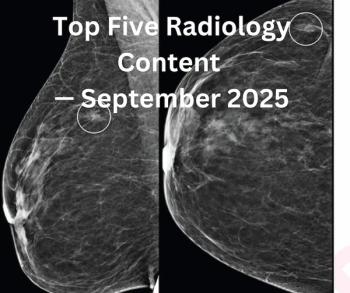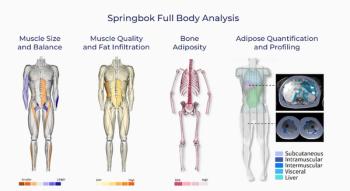
Radiologists hear call to pursue cardiac imaging
Radiologists must embrace cardiac imaging, especially coronary CT angiography, but many are hesitant to do so, according to Dr. Kerry M. Link, a professor of radiology, cardiology, regenerative medicine, and biomedical engineering at Wake Forest University Health Science Center in Winston-Salem, NC.
Radiologists must embrace cardiac imaging, especially coronary CT angiography, but many are hesitant to do so, according to Dr. Kerry M. Link, a professor of radiology, cardiology, regenerative medicine, and biomedical engineering at Wake Forest University Health Science Center in Winston-Salem, NC.
Advances in cardiac imaging will have a profound and long-lasting effect on medicine, health economics, and especially the field of radiology, Link said during the annual oration in diagnostic radiology, "Cardiac imaging: a second chance."
"Regardless of whether or not radiology is successful at staking a more significant claim in cardiac imaging, we will mark this time as a defining moment and as the beginning of significant changes in radiology's role in medical imaging," Link said.
Despite widespread coverage of cardiac CT in medical journals as well as the mainstream media, Link noted a lack of enthusiasm for cardiac CT among colleagues, summarized by remarks such as the following:
- Cardiac imaging is considered the purview of cardiology. There is no sense in trying to break the stranglehold.
- Given the current staffing shortage, diverting time and effort to cardiac imaging is not economically viable, especially since heart disease and the technologies used to image the heart are complicated and beyond our current knowledge base.
- Will cardiac CT make a real difference, or is it simply a new technology looking for an application?
- It's unclear how the new technology can be assessed within the context of coronary heart disease, not to mention heart disease in general.
Radiologists also need to know what is at stake regarding cardiac imaging, Link said. The top five causes of death are heart disease, cancer, stroke, chronic lung disease, and accidents. Cardiovascular disease is the underlying cause of death for nearly 1 million U.S. residents and the contributing cause of death in 1.4 million.
Within heart disease, coronary artery disease is the leading cause of death, responsible for nearly 500,000 deaths, with an additional 225,000 deaths due to hypertension and other heart diseases. To put this into perspective, stroke is responsible for 157,000 deaths, and peripheral vascular disease accounts for 36,000 deaths. Heart disease is the most common disease in the U.S., and it is the single largest expense to the healthcare system, he said.
It's not feasible to work up every patient with acute chest pain in the catheterization lab. Many patients fall into a pretest probability of intermediate risk, which accounts for the large numbers of echocardiology and nuclear cardiology studies performed in the U.S., Link said. But there are always equivocal cases. Additionally, diagnostic cardiac catheterization only measures the lumen, which can miss vulnerable plaque, a major focus of today's coronary disease research.
Significant disease often goes undetected with diagnostic angiography, perfusion, and wall motion imaging, he said. This is due to compensatory extension of the vessel wall, which delays the development of stenoses until the end of the atherosclerotic process.
"It is the detection of vulnerable plaque that should be the Holy Grail of coronary imaging," he said, adding that CT surpasses diagnostic angiography for this purpose because it visualizes the vessel wall.
It's not enough, however, for radiologists to simply interpret the exam that is in front of them. They must become information integrators, which is possible by availing themselves of the patient's electronic records. The cardiac imager needs to understand all tests, review all studies, and be familiar with echo and nuclear cardiology.
"It doesn't matter how good you are at interpreting a study. Failure to integrate all information just reinforces the notion that cardiologists are better at reading cardiac imaging studies," Link said.
He noted that many echo and nuclear cardiology studies are not accessible through hospital-wide PACS and are not available for general review by noncardiologists. This has tremendous symbolic meaning, he said, and should not be allowed.
The good news is that radiologists are well versed in CT, giving them an advantage that was lacking with echo and nuclear cardiology. Additionally, cardiac CTA applications will have a significant effect on a prevalent disease and therefore should justify the redistribution of radiology staffing, he said.
"Radiology is in a unique position to provide the most information without billing multiple interpreters, a clear value-added service," he said. "However, it depends on radiologists' willingness to embrace coronary CTA and cardiac CT."
Newsletter
Stay at the forefront of radiology with the Diagnostic Imaging newsletter, delivering the latest news, clinical insights, and imaging advancements for today’s radiologists.

























